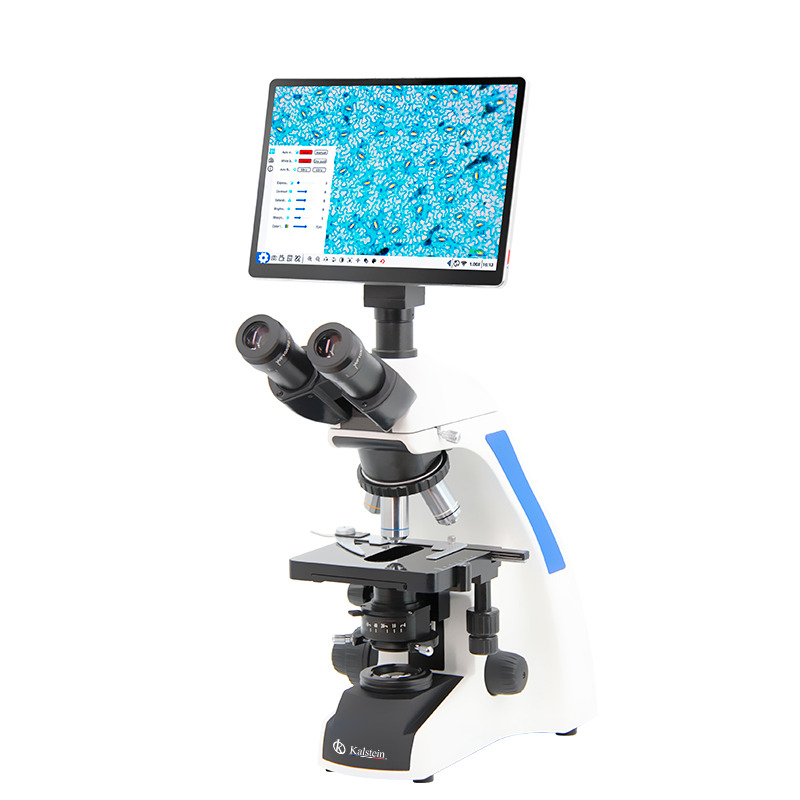Microscopes have become a necessary constituent for medical innovation globally. These powerful gadgets enable scientists and physicians to probe the most minute specifics of life, from individual human cells to bacteria invisible to the naked eye. One area where the capabilities of microscopes have demonstrated their invaluable worth is in the study and comprehension of diseases. Without the ability to visualize pathogenic cells and viruses, doctors and scientists could not fully understand how these diseases operate, nor could they manufacture effective treatments.
In addition, microscopes have helped spur significant progress in regenerative medicine – an emerging field concerned with the creation and usage of laboratory cells, tissues, and organs to repair or replace those damaged in the human body. Microscopes, particularly advanced electron microscopes, have made visualization and manipulation of these complex biomedical structures feasible.
Are you yearning for top-tier medical equipment, ready to enhance the efficiency of your laboratory? Visit https://kalstein.de/category-product/laboratory-line/microscopes/ to explore our high-end catalog, packed with the best finds at the most competitive prices. Excellence marks our brand, we innovate and manufacture high-precision equipment, both reliable and durable to meet your needs. Why wait? Make your quick and secure online purchase, take the leap towards the future of medical technology today. https://kalstein.de/
Benefits and Advantages of Microscopes in Laboratory Research
In laboratory research, microscopes serve as an invaluable tool for sample analysis and observation. They help reveal details that are invisible to the naked eye and might even assist in discovering new life forms. Additionally, microscopes enable researchers to track and document cellular changes over time, which can be extremely helpful in studying biological processes.
Furthermore, the advanced microscopes available today offer magnification and resolution capabilities unthinkable in the past. These enhanced capacities have allowed us to understand the secrets of the microbial world better and have led to an unprecedented increase in our abilities to fight diseases and improve human health.
Unique Features of Modern Microscopes
Microscopes have come a long way since their invention in the 17th century. Modern microscopes possess a set of unique features making them powerful allies in advancing science. One of these unique features is the ability to view in 3D. Confocal and scanning microscopes allow scientists and physicians to view samples in three dimensions, which can provide a more comprehensive and accurate view of study objects.
Moreover, many microscopes are now digital, which means images can be captured and stored on a computer for later analysis. This allows for a more detailed and precise study of images and ease in sharing findings with colleagues and collaborators worldwide.
Microscope as a Problem Solver
The use of a microscope allows users to tackle and solve various specific problems. For instance, in the field of medicine, microscopes are essential for diagnosing many diseases. By allowing doctors to examine body tissues and fluids at the cellular level, microscopes can help identify signs of diseases that would otherwise be impossible to detect.
In the field of chemistry and physics, microscopes can serve to understand the properties and behaviors of various materials at the microscopic level. In this way, microscopes significantly contribute to innovation and scientific progress over a wide range of disciplines.
Future Investments in Microscope Technology
The future of microscopes seems bright, with many technological advancements on the horizon. As we progress into the digital age and the miniaturization of technology becomes more prevalent, it is probable that we will see microscopes that are smaller, more powerful, and more accessible than ever. This will represent a significant leap forward for medical innovation and laboratory research.
Lastly, the increasing availability of affordable microscope technology for students and hobbyists also promises to open the field of science to a broader audience. More and more people will have access to the necessary tools to explore the microscopic world, which has the potential to drive renewed interest and greater engagement in the fields of science and medicine.
Conclusion
From their humble beginnings to impressive modern advancements, microscopes will continue to play an integral role in driving medical innovation and fostering laboratory research. As we continue to explore the incredible microscopic world and unveil its secrets, microscopes will remain an indispensable companion in our journeys of scientific discovery. With a variety of benefits and the ability to solve specific problems, this invaluable tool will continue to be a cornerstone in the future of science and medicine.

